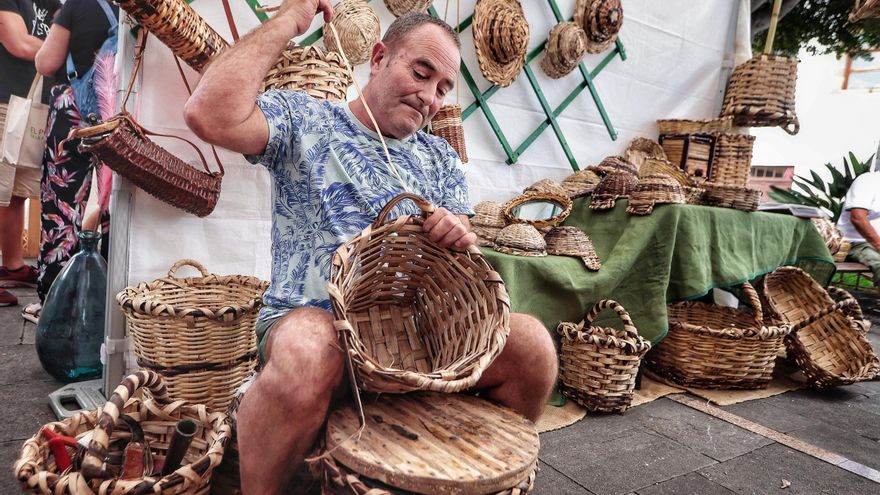
The historic center of garachico was very crowded this Saturday. The Plaza de La Libertad once again hosted, after four years, the Crafts Fair on its traditional dates.
The great atmosphere was concentrated in the roundabout of san franciscowhere they were installed the ventorrillos to drink and eat something. In the stall area of the artisans there was movement of visitors, but less intense and boisterous.
Adriana Ramos, Of Cuban origin, she makes felt pieces and says that going to the northern town “is pleasant.” In his second participation, the first was in 2019, the change experienced by the stands stands out, which have gone from reeds to white tents. For Ramos, with the change “our work is highlighted more.”
David Guijarro has been working with wood for more than four decades. She started at the age of 15 and admits that she has had a career “always in the same line”. He defends that he is “a traditional craftsman in a trade that is in the process of disappearing.” 90% of his working time is dedicated to this activity, although sometimes he also has to do some odd jobs that appear to him. But he acknowledges that he does not provide the main source of income for his family. That function is performed by his wife, who has a conventional job. He recalls that crafts, also in past centuries, were almost always a complementary activity.
He misses a “culture” to value these trades and “our roots”. And he regrets that politicians talk about support and facilities, but the reality is different. He explains that one of his difficulties is obtaining raw material and he is not aware of a regulation that facilitates access to it. He clarifies that in fairs like the one in Garachico, 90% of his clients are foreigners.
One of thes Garachiquense artisans present is María Gorrín, who has been working as a jigsaw for more than 50 years. Every Sunday she is at the farmer’s market in her town and, when she can, she participates in some other fair. She points out that “you can’t” live on drafts, but thanks to it “I got out of some trouble.” She went from working for individuals who distributed work in the north or from making pieces for the Women’s Section in the first half of the 70s to being independent. And today she considers that she cannot be missing from the sample of her municipality.
Other products
Isabel Miranda is a traditional potter, like her husband. Until noon on Saturday, the attendance had not been excessive, in her opinion, but she is confident that in the afternoon and on Sunday the attendance of visitors will be encouraged. She clarifies that her activity is traditional because she does not use mechanical means (such as lathes, for example) and applies soil “that we take from the Island.” The ganigos and vessels based on aboriginal models continue to interest the clientele.
Valentin Berradre Zabalza and Paqui Moreno They settled eight years ago in Puerto de la Cruz. Seven years ago they participated in a weaving workshop with the artisan Tomás Hernández. And now that they are retired, they make their scarve creations on a loom. They apply the technique that has always been used in Europe, Spain and Canary Islandsbut their designs are current with wool, silk or linen, for example.
Jose Manuel Garcia Perez he learned chestnut basketry as a child. Several generations older than him did the same. But with him the trade in the family may die. His daughter is a biologist and he doesn’t want her to get close to the work from which she lives.
In a photo album it shows all the steps you need to do. He wryly recalls that before the loads of raw materials were carried by the beasts, but now it is he who carries the wood to the truck. In his youth he held other jobs, but for the past twelve years he has been involved with the craft more seriously. Like Guijarro, he is tired of the promises of the administrations. He laments that his products cannot be in a restaurant or a hotel, because he cannot afford an isolation chamber to clean his merchandise and put a seal on it; something that he does incorporate into the merchandise that arrives from Portugal or China, for example.
















